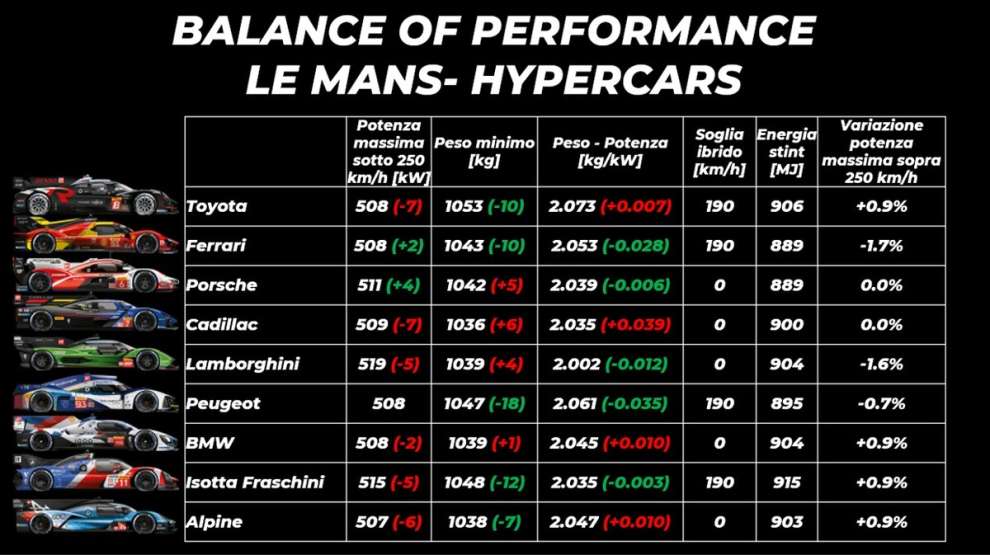By Carlo Platella
“The analyzes conducted by the FIA and ACO and the restrictive nature of the technical regulations have meant that the BoP has been kept to a minimum for 2024. […] Therefore you will be able to appreciate the merits of each manufacturer”. So reads the statement released by the FIA on the eve of the 24 Hours of Le Mans, promising a fair fight between all participants. In fact, the organizers have finally illustrated the process behind the definition of the Balance of Performance, choosing this time to stop only at the first point.
The purpose of the BoP
To understand the management of the BoP for the next 24 Hours of Le Mans it is first necessary to remember its purpose. In defining the Balance of Performance, the FIA presents it as a mechanism necessary to obtain similar performance between cars, so as to limit its development and associated costs. Talking about performance, however, is not entirely appropriate, as the BoP’s interest is performance potential of each car, which does not necessarily coincide with the competitiveness expressed on the track.
In fact, the objective of the Balance of Performance is not to act on the so-called ‘operational performance’, i.e. on all the work of preparing, managing and exploiting the car on the track which affects competitiveness. Aspects such as tire management, driving, pit stop times and appearance are therefore excluded. In other words, the BoP was not created to iron out the performance differences between two cars from the same manufacturer, but simply to standardize the project characteristics.
The drafting of the BoP
Normally the procedure for estimating the Balance of Performance involves three different steps. In the first they are taken into consideration the approval parameters, i.e. the aerodynamic indicators measured in the wind tunnel. However tangible, the differences are minimal, considering how the technical regulations already prescribe very narrow load and aerodynamic efficiency windows.
It may happen that the homologation parameters alone are not sufficient to standardize the potential of the cars, also due to the inevitable correlation errors between the real world and the track. For this reason, a second phase called ‘platform equivalence‘, where corrections for Hypercar and LMDh are applied to the BoP, the same for all the cars belonging to each group. The drafting of the Balance of Performance ends with the ‘compensation between manufacturers’, intervening individually on the individual cars following the analysis of the data collected on the track. However, these are corrections that are not necessarily applied and possibly only in the presence of sufficient data available.

Towards Le Mans
In view of the upcoming 24 Hours of Le Mans, the organizers relied exclusively on data from the last edition. Based on the evidence collected, FIA and ACO have decided to limit themselves to balancing the homologation parameters, thus stopping at the first point of the BoP process, kept to a minimum. The novelty is the addition of a new parameter to regulate the maximum power differently above 250 km/h, so as to equalize the top speeds without creating imbalances in the acceleration phases. The hope is that the objectives will materialize in an effective balance between the participants, so as to witness an edition that is at least as hard-fought as that of the Centenary.
#hours #Mans #BoP #minimum #open #fight